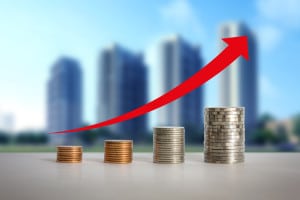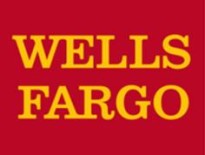When the Fed raised the federal funds rate, nearly everybody seized the opportunity to raise their prime rates, but deposit rates may as well be a game of chicken.
“Most banks can’t afford to pay up yet,” said Frank Farone, managing director at Darling Consulting Group in Newburyport.
As he puts it, the protracted ultra-low rate environment of the past decade or so put significant pressure on margins and earnings that most bankers haven’t experienced before in their careers. The recent rise in rates is helping relieve earnings pressures but before bankers make any meaningful move on deposit rates, they need to see loan pricing catch up with market rates. Banks hold much less in variable assets these days due to the dramatic shift in borrower preference for fixed rates. At the same time, consumers paid down and refinanced variable rate debt into fixed low rates for the long term. With yields so low, bankers had little choice but to hold on to all the loans they could just to keep earnings from collapsing, Farone said.
But there might be a case for some banks to think about nudging up deposit rates sooner than later – for instance, to reduce their reliance on borrowings to fund loans, said Giuseppe “Joe” Femia, vice president and shareholder at G.T. Reilly & Co.
“If the bank is trying to shift liabilities and pay down borrowings, the bank may be more likely to increase their deposit rates to help grow deposits, which will enable the bank to pay down outstanding borrowings,” he said.
Femia said that a bank’s ability to reduce its reliance on borrowings may also be part of the strategy of several community banks establishing branches in new markets, while most others maintain or trim their physical locations due to shifting consumer preferences for online and mobile channels.
Moreover, deposit rates may not make that much of a difference to depositors anyway. Farone also sees an element of apathy among depositors. The movement into bank deposits was largely a flight to safety and consumers are likely still inured to perpetually low rates.
“We go back in time and look at how deposit rates change by category,” he said. “What we find is typically, the first three moves by the Fed you don’t see much in the way of movement, if at all, particularly when emerging from extremely low rates. Once you hit a 1 percent increase in interest rates, then you start to see depositors awaken and you start to see deposit rates move. And once you get above 1 percent deposits start to move up at an accelerated rate.”
A Modest Increase At Middlesex
But outliers do exist. Middlesex Savings Bank is one of them.
“We’ve actually raised rates every time the Fed has raised rates since December 2015,” said CFO Brian Stewart. “We have the posture of valuing our depositors as much as we value our borrowers, so we think raising rates is the right thing to do.”
It’s a modest increase, of course, but he says the bank has done the math and figured out what it could afford. The decision is a little bit easier to make, too, because Middlesex Savings Bank does not have to contend with shareholders.
“We can’t just pass on the whole 25 basis points. We’ve done the math and said we can move five to 10 basis points every time the Fed goes 25. It seems to work OK for us,” Stewart said. “We’re of the opinion that we think the economy is doing well enough that the longer term will creep up.”
According to FDIC data, core deposits at Middlesex Savings Bank rose 5.7 percent between the fourth quarter of 2015 and the end of 2016, so it would seem the bank was at least somewhat rewarded for its willingness to move deposit rates.
The Institution for Savings in Newburyport has deposit rates as high as 50 basis points above market rate on some of its longer-term CDs, said President and CEO Michael J. Jones.
“Most definitely, there’ll be quite a lag, in particular on the money market accounts,” Jones said of the industry more generally. “It may take another two rate hikes before we start to see any increases in those types of products.”
But he’s also not certain that we’ll even see two more rate hikes this year. Generally speaking, people seem to agree the magic number will be two or three more rate hikes, all of which will undoubtedly clock in at a modest 25 basis points.
“We had a little bit of hesitation with the first increase from the Fed,” Femia said. “But I believe the second or third rate increase from the Fed is when you’re going to see it happen on the deposit side.”
Farone said he recommends that banks undertake a core deposit analysis before they think about nudging up their deposit rates. Every bank should have a clear understanding of the type of shifts in mix and potential disintermediation risk they might experience as the Fed continues to tighten before they think about nudging up their deposit rates, he said.
“The more information you have, the better off you are for making those deposit pricing decisions,” he said.
Editor’s Note: This article has been updated to clarify comments made by Darling Consulting Group’s Frank Farone.




 |
| 



